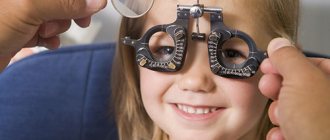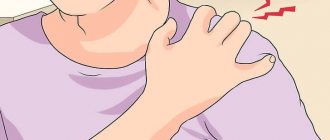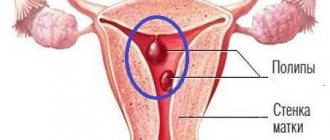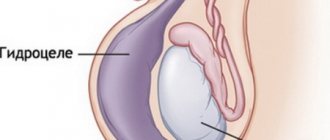Anal fissure is one of the most common proctological problems associated with a violation of the integrity of the structure of the anal mucosa. The tissue rupture, which mainly forms on the back wall of the anus, can have different lengths and depths, but usually its length reaches 1-2 cm. Over time, the crack changes: granulation, “tubercles” form at the edges, which can later turn into a fibrous polyp . This pathology is encountered by people aged 20-60 years, but in females this disease is diagnosed much more often.
Causes
There are a number of factors that contribute to the appearance of anal fissures. These include:
- Constipation. Constant defecation of hard feces is fraught with the appearance of microcracks and damage to the anal tissues. When a person pushes, pressure increases in the anus, which can result in tissue rupture and cracks.
- Proctitis (inflammation of the mucous membrane). Inflammatory processes make the mucous membrane less durable and, therefore, more vulnerable to injury from feces.
- Childbirth. The mucous membrane can crack as a result of too active pushing, the use of vacuum and other manipulations.
- Poor nutrition. If food (nuts, seeds, etc.) is poorly chewed, then it may not be completely digested in the future. As a result, remaining sharp pieces of food can damage the mucous membrane during bowel movements.
- Increased power loads;
- Sedentary work;
- Examination of the intestines through the anus;
- Anal sex;
- An unbalanced diet - excessive consumption of spicy foods and alcohol.
Symptoms and clinical course of the disease
An acute anal fissure appears suddenly after exposure to one or more unfavorable factors (exacerbation of hemorrhoids, prolonged diarrhea or constipation, dietary errors, alcohol abuse). The disease makes itself felt by acute pain, which intensifies during bowel movements.
The pain is accompanied by the appearance of fresh blood on stool, toilet paper or underwear, but significant bleeding is rare.
Acute pain causes a reflex spasm of the muscles of the internal anal sphincter, which disrupts the blood supply to the tissues and complicates the independent healing of the mucosal defect.
With a long course of the pathology (4 weeks or more), the edges of the crack thicken, so that healing becomes impossible even when the spasmodic internal sphincter relaxes. The disease takes a chronic course and can last for the rest of your life.
Complications
Every time you defecate, the wound comes into contact with feces, which contain a huge amount of bacteria. Pathogenic microorganisms settled on the crack aggravate inflammatory processes.
If left untreated, the consequences can be very different:
- Bleeding, which may cause anemia;
- The chronic form is a predisposing factor to the formation of tumors;
- Infection of the wound is fraught with the development of paraproctitis or sepsis;
- A prolonged inflammatory process is dangerous due to the formation of fistulas.
Surgical methods
The main goal of surgery for anal fissure is to create conditions for successful self-healing of the wound defect. In chronic pathology, healing is hampered by rough edges and deposits (granulation) at the bottom of the wound. Therefore, the edges of the crack are excised and granulations are removed, transforming the old wound into a fresh one.
In 30% of cases this is enough to get rid of the disease. The use of laser surgery allows operations to be performed on an outpatient basis, without placing the patient in a hospital.
However, most patients develop persistent spasm of the internal sphincter, which impairs blood supply to injured tissues and prevents wound healing. Therefore, the classic method of surgery for anal fissure is a combination of excision of the fissure with sphincterotomy (partial dissection of the internal sphincter).
Diagnostics
The presence of an anal fissure can be determined during a visual examination - the doctor can easily identify swelling and disorders of the mucous membrane. A finger examination allows you to determine the crack located inside by determining its size and feeling the edges.
Diagnostic methods
- Sigmoidoscopy - allows you to assess the condition of the rectum at a distance of 20-25 cm from the anus. During the procedure, tissue can be excised for histology, identified tumors can be removed, and medication can be administered;
- Anoscopy is an informative technique that allows you to examine the anal canal at a distance of 10-12 cm. Using an anoscope you can detect polyps, inflammatory processes, bleeding and other pathological changes;
- Laboratory tests - the patient is sent for a general clinical analysis of blood, feces and urine, culture for flora, etc.;
- Taking an anamnesis allows you to exclude other possible diseases.
Anal fissure: principles of diagnosis and treatment
The causes and mechanisms of development of anal fissures are varied. According to most researchers, the most common cause of cracks is mechanical. In this case, not only the consistency of the stool is of great importance, but also the anatomical features of the structure of the male and female pelvis (in the first case, posterior fissures mainly occur, while in women, who are statistically affected more often than men, anterior anal fissures predominate). At the first stage, a defect in the mucous membrane of the anal canal occurs, and then infection, cleansing and healing of the defect occur successively. As scientific research has shown, the main role in the regeneration process is played by local immunity, and the chronicity of cracks is a consequence of dysfunction of the latter. Apparently, in some cases, the root cause of the development of cracks may be inflammatory processes in the anal canal associated with a violation of local immunity. In some patients, vascular changes are a risk factor for developing the disease. Indeed, anal fissures are often combined with hemorrhoids. Eliminating blood stagnation and improving blood flow, that is, the main manifestations of hemorrhoids, contribute to the healing of cracks. The role of neurocirculatory disorders responsible for the occurrence of sphincter spasm remains very significant, although the most unexplored. The possibility of influencing this link in pathogenesis with the help of nitro drugs confirmed the importance of eliminating spasm for wound healing. Further research into the mechanisms of crack formation will help improve treatment results.
Prevalence
Approximately 10–15% of patients who seek help from a proctologist suffer from anal fissures. For many years, this disease has been ranked third in terms of treatment after irritable bowel syndrome and hemorrhoids. More than 60% of patients with anal fissure are women.
Classification of anal fissures
There is no classification of anal fissures. According to the course of the disease, acute and chronic fissures are distinguished. According to localization, they distinguish between the anterior ones, located at 12 o’clock on the watch dial, and the posterior ones at 6 o’clock (coccygeal wall of the anal canal), the latter are found in almost 90% of patients.
Clinical picture of the disease
The most common manifestation of an anal fissure is pain associated with bowel movements. As a rule, it occurs at the time of bowel movement and continues after completion of this process for about half an hour. Such clinical manifestations most often correspond to an acute anal fissure. Sometimes the pain appears with the urge to stool or is constant. Prolonged pain and little effect of analgesic therapy, as a rule, indicate the development of sphincter spasm. The latter itself is capable of increasing pain during defecation, which can lead to a vicious circle, manifested by the development of persistent spasm. Bleeding most often occurs at the moment of formation of an acute crack and is rarely profuse, although even small blood clots may be released on the first day. Subsequently, blood discharge is noted on toilet paper; less often, blood drips into the toilet. With chronic anal fissures, bleeding is often associated solely with bowel movements and rarely causes severe pain and spasm. As with hemorrhoids, the blood lost is often scarlet in color. When interviewing patients, it is possible to identify the fact of stool disorders, but it should be remembered that diarrhea leads to cracks no less often than constipation. No less dangerous in terms of the occurrence of cracks is “heavy” coarse stool, caused by ingesting a large amount of coarse fiber without a sufficient amount of liquid. In modern conditions, when collecting anamnesis, the possibility of anal sex should be clarified, which allows not only to establish the cause of the disease, but also to take measures to exclude the specific nature of the lesion. Before examining a patient, you should remember a few strict rules. The order of diagnostic procedures must be strictly observed, which always begins with an examination, which cannot be carried out in a standing position. Digital examination of the anal canal should be carried out using a gel containing lidocaine, starting manipulation from the side of the healthy wall. The absence of visual signs of the disease is not a reason to refuse digital examination and further treatment of a patient with a presumptive diagnosis. The detected changes should be interpreted taking into account the duration of the disease and the treatment performed.
When examining the anus, the patient should be correctly identified. Inspection in the lateral position requires great skill and is a necessary measure. It is preferable to conduct the examination on a gynecological chair or in the knee-elbow position with a good inward bend of the back. The last technique allows you to spread the buttocks well, in addition, you should slightly stretch the skin, and then a defect can be found on the transitional mucosa, sometimes extending to the skin. The length of the crack usually does not exceed 1 cm, although in some cases the defect can reach the length of the anal canal. With an acute fissure, the defect may be oval in shape, superficial, with smooth edges; in some cases, the bottom of the fissure may be the sphincter. The atypical lateral location of the cracks, especially in combination with the multiple nature of the lesions, most often corresponds to improper sexual contact. In the case of a chronic fissure, scars can be found, sometimes with manifestations of hyperkeratosis, the edges of the fissure are raised, its bottom is smooth, sometimes shiny, covered with “varnish granulations.” An infected crack has a dull bottom and undermined edges. The study of the anal reflex, despite the simplicity of execution, is difficult in terms of interpreting the results obtained. The results of a digital examination also largely depend on individual skills, but in any case, forced insertion of a finger into the anal canal is unacceptable. At a minimum, with an acute fissure, it is possible to detect pain in the wall of the anal canal and the manifestation of spasm at the time of its examination, especially pronounced when the dentate line zone (the border of the rectum and the anal canal) is involved in the process. With sufficient experience, it is possible to identify a defect in the mucous membrane, in the case of compaction of the edges of the crack, and detect a sentinel tubercle or hypertrophied anal papilla. Additional visual examination of the anal canal using a mirror or anoscope is carried out by proctologists.
Complications of anal fissure
The most common complications of anal fissure include the development of persistent sphincter spasm, usually accompanied by disruption of the defecation process, sometimes leading to coprostasis. Acute paraproctitis is much less common; sometimes the fissure becomes the cause of an incomplete internal fistula of the rectum. Massive intestinal bleeding occurs extremely rarely, mainly in cases of traumatic development of the fissure.
Differential diagnosis
Clinical manifestations of anal fissure do not differ in the specificity of symptoms. In case of an acute fissure or its complications, the differential diagnosis is made with acute hemorrhoids, paraproctitis, cryptitis, and rectal prolapse. It should be remembered that cryptitis and hemorrhoids are often combined with an anal fissure. Therefore, to carry out a differential diagnosis, one should rely not only on a careful history taking and digital examination (requiring great skill), but also on a visual examination using an anoscope or a rectal speculum. If a deep fissure with undermined edges, similar to an ulcer, is detected, damage to the anal canal by Crohn's disease, specific sexually transmitted infections, or the development of a tumor of the anal canal should be excluded. In patients who have had anal intercourse, injury to the sphincter, rectum, or the presence of a foreign body should be excluded. In case of any treatment of a patient with a fissure to a therapist or general practitioner, in addition to the prescription of simple conservative treatment, he should receive a referral for a consultation with a proctologist.
Conservative treatment
The choice of treatment for anal fissure is usually determined by the stage of the disease or the nature of the complications that have developed. The diet for patients with fissure excludes the consumption of alcohol, spices, and fried foods. As a rule, a protein-plant diet 3 is recommended (a high-fiber table with increased fluid intake to achieve a soft stool consistency). In patients with chronic constipation or “sheep feces”, it is permissible to recommend taking petroleum jelly or liquid paraffins for the period of treatment, but not more than three weeks. In patients with concomitant diseases of the colon, such as irritable bowel syndrome, diverticular disease or nonspecific colitis, the diet should be aimed at normalizing stool.
Patients should pay special attention to performing hygienic measures. During the acute period of the disease, a non-hot shower should be recommended 2-3 times a day and always after stool, and it is necessary to wash not only the skin of the perineum and anus, but also the anal canal itself. In cases where water procedures are not available, the use of special wet sanitary napkins should be recommended.
If a fissure is combined with hemorrhoids, drugs containing bioflavonoids (diosmin and hesperidin) should be prescribed to treat the latter.
Local therapy
The purpose of local treatment is to relieve inflammation, stimulate repair processes and analgesia. To solve the first two problems, we can recommend Posterizan Forte ointment (or candles of a similar name). The drug contains a suspension of E. coli culture and hydrocortisone. E. coli metabolites can enhance local immune responses, accompanied by the release of cytokines, especially intraleukin-1. In addition, a suspension of bacterial culture causes the formation of specific immunoglobulin A, which forms a delicate film on the intestinal mucosa, acting as a local protective barrier. Hydrocortisone, which is the second component of the drug, helps to quickly suppress inflammation and accelerates the processes of tissue regeneration induced by a suspension of Escherichia coli culture. The ointment should be administered using a special applicator while lying down. The drug is prescribed 2 times a day, and in case of severe inflammatory process, for example in patients with nonspecific colitis, the frequency of administration can be increased taking into account the frequency of stool. The maximum duration of treatment, as a rule, does not exceed three weeks. If it is necessary to continue therapy, it is possible to use suppositories or Posterizan ointment containing exclusively a suspension of bacterial culture.
Among the drugs that have an analgesic and reparative effect, Relief Advance suppositories should be recommended. The composition includes 10.3% benzocaine, which has a rapid analgesic effect, in addition, shark liver oil containing fat-soluble vitamins, free fatty acids, squalene and alkylglycerol, which are powerful reparants, which allows them to be recommended even for use in the postoperative period in patients who have undergone surgery for cracks, the frequency of administration is 3–5 times a day. In patients with difficulty defecating, suppositories can be prescribed immediately before stool. In the absence or disappearance of pain, you can switch to using suppositories or Relief ointment without painkillers. The drug is highly effective, well tolerated and rarely produces adverse reactions, which allows its use even at all stages of pregnancy. Conservative treatment of patients with severe pain or sphincter spasm, as well as in cases of relapse of the disease or combination with nonspecific colitis, should be carried out by a proctologist, since the risk of complications or chronicity of the fissure in these patients is extremely high. The use of nitro drugs for the treatment of fissures accompanied by spicter spasm is hampered by the lack of official drugs approved for use for a new purpose.
Surgical treatment of fissure
Indications for surgical treatment of anal fissure arise in case of chronicity of the process. In this case, it is important to assess the adequacy of the conservative treatment performed, as well as the nature of local changes. Quite often, patients equate the healing of an anal fissure with the disappearance of its clinical manifestations, which is a very common misconception. Therefore, the disappearance of symptoms of the disease is not a reason for refusing to re-examine the patient. In addition, in some cases, healing may be accompanied by the formation of a very rough scar or “sentinel” tubercle, that is, a small bulge of the mucous membrane at the base of the crack. Persistent sphincter spasm also indicates the lack of effect of conservative treatment. In all such situations, the patient should be referred to a proctologist to decide on the choice of further treatment method. In this case, minimally invasive manipulations include a blockade with an anesthetic and hormones or Botex injections. The use of the latter is an extremely expensive treatment method. Surgery for anal fissure involves excision of the tissue defect followed by open management of the wound until complete healing. In cases where there is a pronounced spasm of the sphincter, excision of the fissure is complemented by dosed dissection of the sphincter, the so-called lateral submucosal sphincterotomy. The duration of disability in the postoperative period is determined by the rate of healing of the postoperative wound and depends on its size and individual characteristics of regeneration. As a rule, it takes 3–4 weeks until the wound is completely epithelialized. Relapses after surgery are very rare.
Literature
- Fundamentals of coloproctology edited by Academician of the Russian Academy of Medical Sciences, prof. Vorobyova G.I. Rostov-on-Don: Phoenix Publishing House. 2001.416.
- McNally P.R. Secrets of gastroenterology trans. from English M.–S.-Pb: ZAO “Publishing House BINOM” “Nevsky Dialect”. 1998. 1023 p.
K. E. Mayat , Candidate of Medical Sciences European Medical Center , Moscow
Treatment
Treatment of acute anal fissure
In this case, conservative treatment methods are used, involving the use of special ointments, suppositories, and laxatives. Drug therapy is aimed at:
- Anesthesia;
- Relieving anal spasms;
- Normalization of stool;
- Healing of the wound (crack).
If conservative treatment does not achieve the desired effects, then minimally invasive methods can be used.
Treatment of chronic anal fissure
If the disease has become chronic, then most likely, surgical intervention will be required - removal of granulation and cutting off the tubercles. Further treatment continues using conservative methods.
Treatment methods:
- Radiosurgery – targeted removal of damaged tissue using the Surgitron radio wave apparatus;
- Pararectal blockade - injection of an anesthetic with a syringe and further divulsion - expansion of the anal sphincter to relieve spasms.
Preparing for surgery
3 days before surgery, you should avoid foods that stimulate gas formation in the intestines. The ban includes black bread, legumes, cabbage, fresh vegetables and fruits, juices, mineral water, and alcoholic drinks.
A day before excision of the anal fissure, they switch to easily digestible food (“chocolate” diet). 12 hours before surgery. If you smoke, it is advisable to also give up cigarettes on the day of surgery.
During preparation for surgery, a protective regime is followed. It is necessary to exclude physical and nervous stress, do not drink alcohol, as well as tonic drinks, including coffee.
The evening before surgery, the intestines are cleansed using enemas or laxatives.
General recommendations
After defecation, you should treat the anus and the area around the anus with cold water - this will help reduce pain and prepare the anus for the use of topical medications.
To facilitate the act of defecation, it is recommended to use enemas. The procedure is performed when there is a urge to defecate.
- Oil enema. To prepare the solution, you need to measure 150 ml of water and add 50 ml of oil;
- Water enema. In this case, boiled water is used, preferably with the addition of disinfectants.
How is the operation performed?
Surgery for anal fissure takes 15-30 minutes. If intravenous anesthesia is used to control pain, the patient falls asleep before the operation and wakes up in the recovery room. If doctors prescribe epidural anesthesia or local anesthesia, the patient is conscious, but does not feel pain. When choosing an anesthesia method, both medical indications and the wishes of the patient are taken into account.
The surgery is performed using equipment that resembles a gynecological chair. Today in Moscow and other cities of Russia, surgeons prefer to replace the traditional scalpel with the latest methods: • electrocoagulation; • radio wave surgery (Surgitron device); • laser surgery.
These methods allow the operation to be performed bloodlessly, since the miracle knives simultaneously seal the vessels. In addition, when using modern technologies, tissue is less damaged, and the healing process is much faster. The choice of method is made by the doctor, taking into account medical indications (size and location of the crack, accompanying changes in tissue, etc.).
What is required for differential diagnosis of this disease?
A fissure can occur with inflammatory diseases of the colon, such as Crohn's disease or ulcerative colitis. Infectious diseases (syphilis, HIV, herpetic infection, etc.) can also contribute to the development of anal fissure. Tumor diseases such as cancer, melanoma, leukemia can manifest themselves in the same way as an anal fissure. The patient will experience pain in the anus and bleeding from the anus.
Rice. 8. Cancer of the anal canal with transition to the perianal skin
Rules of conduct after surgery
After anal fissure surgery, patients are discharged from the hospital on the fifth day. It will take 2-3 weeks for the wound to heal completely. In order for surgery to result in successful restoration of health, it is necessary to strictly adhere to the rules. 1. Stool should be daily, preferably in the morning. 2. If it is not possible to achieve regular bowel movements with the help of a diet, mild laxatives are allowed - as prescribed by a doctor. 3. Toilet paper is replaced by washing. 4. Spicy, salty, smoked foods, fruits with small seeds, and alcohol are prohibited. 5. It is necessary to refrain from heavy physical exertion, as well as from prolonged sitting, visiting the bathhouse, sauna.
If the operation was performed on an outpatient basis, in the first days after surgery it is necessary to care for the wound (daily dressings and warm baths with potassium permanganate), relieve pain using recommended painkillers and strictly follow all the instructions of the attending physician.
How to avoid relapse: patient reviews and doctors’ recommendations
As an analysis of reviews published on the Internet shows, most patients tolerate anal fissure excision surgery relatively easily and are happy to be free of the disease.
However, in order to avoid such surgical interventions in the future, it is necessary to adhere to the rules of prevention: • timely treatment of diseases of the digestive system; • ensuring regular bowel movements; • combating physical inactivity (hiking, swimming, etc.).
The fact is that an anal fissure occurs as a result of the influence of causative factors (diseases of the gastrointestinal tract, irregular bowel movements, a “sedentary” lifestyle leading to congestion of the pelvic organs, etc.). If the causes of the pathology are not eliminated, the disease may return at any time.
Early rehabilitation after surgery
Regardless of the chosen method of operation and anesthesia technique, after surgery, a tampon soaked in medicinal ointments is installed in the anus.
Then, throughout the early postoperative period (the first 2-3 days), dressings are performed daily. Gauze bandages soaked in levomekol ointment are applied to the anus.
Inpatients are advised to begin getting out of bed and walking the day after surgery. A slag-free diet is also prescribed (if there are no contraindications, a “chocolate” diet). The purpose of such a diet is to delay bowel movements for better wound healing.
From the third day, the diet expands, foods containing dietary fiber that stimulate bowel movements are prescribed. If on the third day it is not possible to achieve independent stool, a cleansing enema is used.











